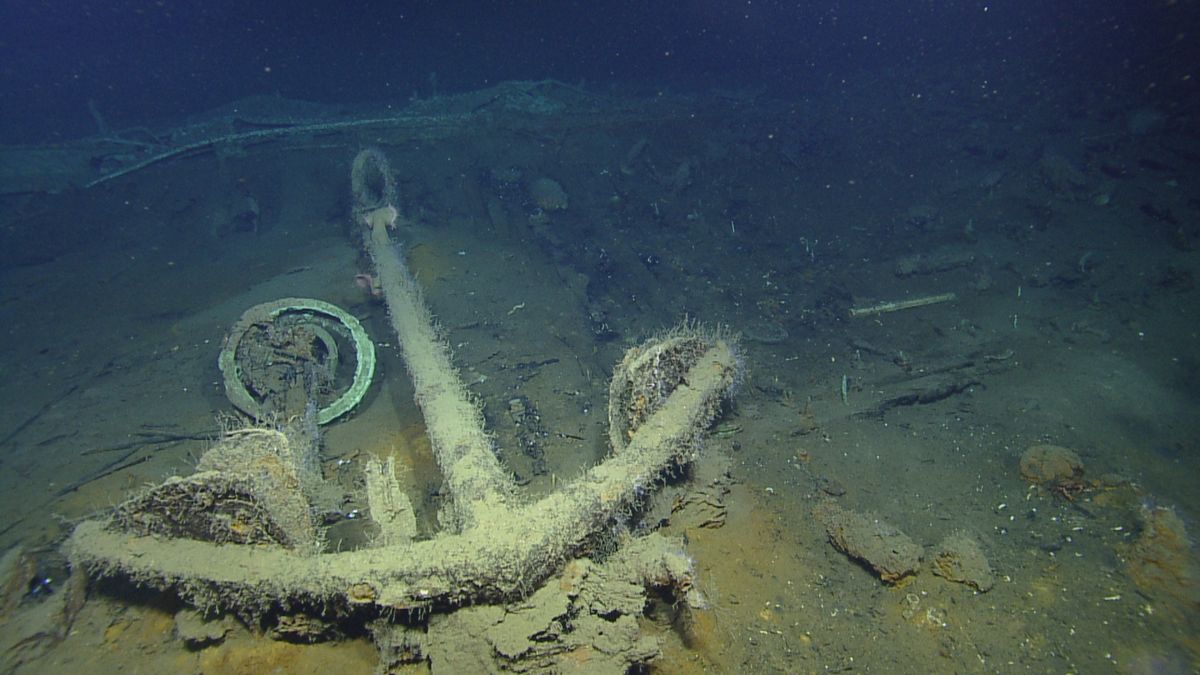Deep-Sea Robot Explores Shipwrecks Thursday: Watch Live Online

A remotely operated vehicle will dive into the Gulf of Mexico to explore three mysterious shipwrecks that may be up to 200 years old, and you can watch the expedition live in a webcast.
Tomorrow (April 24), the ROV will explore debris and artifacts from one of the three ships, which litter the seafloor near the Flower Garden Banks National Marine Sanctuary. You can watch the shipwreck expedition webcast on Live Science.
The shipwreck investigation is part of an ongoing exploration of the Gulf of Mexico seafloor by the National Oceanic and Atmospheric Administration's Okeanos Explorer research vessel. Researchers will search for clues as to whether the ships sunk together and if the wrecks may be significant national maritime heritage sites.
Artifacts at the wreck sites — navigational equipment, muskets, cannons, tallow and medicinal supplies like ginger (used to treat sea sickness) — point to an early 19th-century origin for the ships. [Photos: Shipwrecks of the Deep Sea]
On April 19, ROV pilot Jeff Williams discovered two navigation instruments — an octant and chronometer — partially buried in the sand near the shipwrecks. Williams, who said he lived on a sailboat for 10 years, wrote that the discovery was especially poignant because of his own sailing knowledge.
"One has to be led to think that the shipwreck we were looking at foundered — or was lost at least — with all hands," Williams wrote on the Okeanos Explorer blog. "No one would leave behind tools crucial to their being. And expensive ones at that."
The three shipwrecks are known as the Monterrey Shipwrecks and are identified by letters A, B and C. Wreck A, a wooden ship, has a large cannon that led researchers to suspect it was a heavily armed privateer. Wreck B may have been a merchant ship carrying mezcal, cattle hides and beef tallow from Mexico. Wreck C has a stunning copper-plated hull. The vessels were discovered 200 miles (321 kilometers) off the Gulf Coast in waters more than 4,000 feet (1,219 meters) deep. This month, scientists planned to visit all three sites and one additional potential wreck.
Sign up for the Live Science daily newsletter now
Get the world’s most fascinating discoveries delivered straight to your inbox.
Archaeologists from Texas A&M University at Galveston also hope to determine if the A and C ships were privateering, pirates or government-owned. Privateers were privately owned ships authorized by government letter to attack other vessels during wartime. During the 19th century, the Gulf Coast was home to both pirates and privateers, such as the smugglers Jean and Pierre Lafitte. Several War of 1812 naval battles also played out in the Gulf of Mexico, but the researchers think the ships may have sunk together in a storm, according to a statement from Texas A&M.
"Monterrey B's association with the Monterrey A and C shipwrecks provides clues that it may have been under sail either as a captured prize by a pirate or privateer, or travelling through dangerous waters with a military escort when it capsized in a violent storm," Alicia Caporaso, a marine archaeologist with the Bureau of Ocean Energy Management, wrote on the Okeanos blog on April 20.
The Okeanos Explorer expedition runs from April 10 to May 1. The ship plans to move from the Texas coast to coral habitats offshore of Florida between April 24 and April 26. Scientists with the expedition are also exploring the Gulf's underwater habitats, which include mud volcanoes, methane seeps, brine pools, submarine canyons and deep-water corals.
Email Becky Oskin or follow her @beckyoskin. Follow us @livescience, Facebook& Google+. Original article on Live Science.












